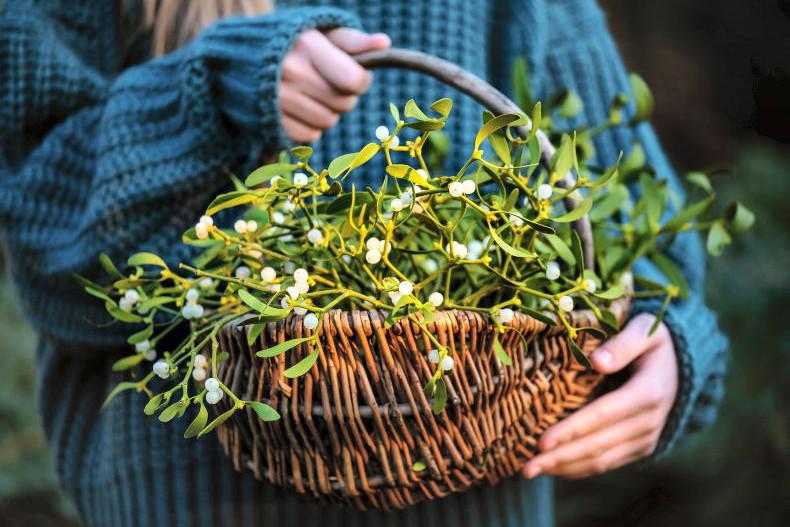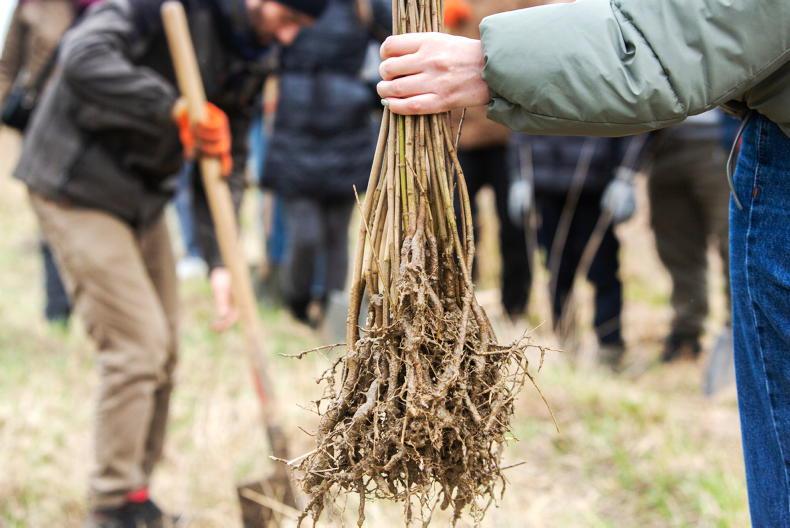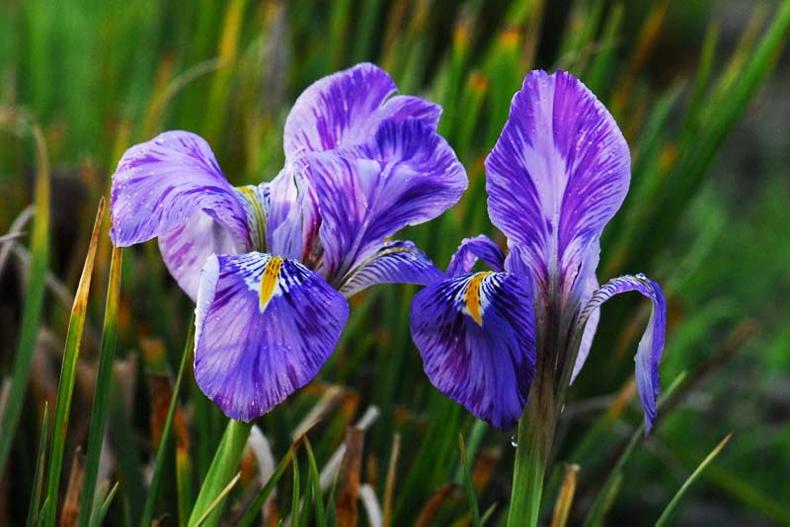Name:
Montbretia, or crocosmia. Its botanical name is used as a common name. The ordinary montbretia is very common in gardens and as a semi-wild plant in many parts of the country - especially the western counties, where it enjoys the higher levels of rainfall. Its larger cousin, Crocosmia ‘Lucifer’ (which is even more striking) offers its own challenges. Misled by its widespread distribution, it is often wrongly considered to be a native plant.
Botanical name:
Montbretia was, at one time, the correct botanical name; named in honour of the 19th-century French botanist Coquebert de Montbret. Although that name became widely used, it was replaced with its modern name of Crocosmia - crocos being the colour yellow, and osmia being scented; a reference to its saffron-like smell.
Family:
Crocosmia belongs to the iris family, the Iridaceae, carrying the typical six petals: three up and three down. The montbretia’s botanical name is Crocosmia x crocosmiiflora, which simply means the crocosmia with flowers like crocosmia. The ’x’ between the two name words signifies that this plant is a hybrid of two species. It is considered that the hybrid occurred either in South Africa, the home of crocosmia, or in France, where it is thought to have first arrived in Europe.
Garden value
Like its namesake, ‘Lucifer’ is very tempting. Its large flowers are at least twice the size of the common montbretia and are a bright red or blazing deep vermillion which makes it stand out. It is well over waist height, which is more than double the ordinary kind. Lifting its large, brilliant flowers to that height leaves them well clear of most small plants and more visible. Its colour is so strong that it often clashes with flowers nearby.
To tone it down, plant it with plenty of yellow and orange flowers and brown, bronze or golden foliage. By associating it with these colours, the intense colour of ‘Lucifer’ is diluted, but it is still very effective. Or associate it with white flowers, such as Mount Shasta daisy, along with paler yellows and perhaps a touch of blue. Grey or silver foliage could be included. These colours tone down the strength of the orange red but the red puts some power into the combination.
Another approach is to plant ‘Lucifer’ in three or four clumps in several parts of the garden, close by and in the distance. The idea is to have the colour picked up by itself at a distance. Make sure the distances between the clumps are unevenly divided.
Growing crocosmia
‘Lucifer’ is easy to grow; requiring good soil which is moisture retentive but not wet in winter, and in full sunshine for best results with most flowers. Since it is a tall plant, its long stems are best tucked in behind low shrubs or other flowers. Although quite robust, the flower stems are tall and maybe tossed about by wind in gardens. It can be positioned towards the front or middle of a mixed bed or border. Often overlooked, its spiky green leaves are attractive before the flowers appear. The ordinary semi-wild crocosmia is able to tolerate more frost than ’Lucifer’ which can be damaged after a prolonged spell of freezing weather. The crown of the top of corms can be covered with a layer of well-rotted garden compost to provide some insulation. CL
Blueberries have become very popular in supermarkets in recent years. Their taste is sweet with an acid touch. They are part of the heather family and originated in eastern North America. They are related to fraughan berries or bilberries, as they are also known, which are native here, found growing on dry hillsides, often with a light cover of pine trees.
Blueberry bushes vary in size between 1.5 and three metres, but are usually kept to about two metres for ease of picking. They are pruned like blackcurrant bushes, removing some older branches down low each year. Good crops of blueberries can be had by growing the bushes in the open soil, but the soil must be pH 5.5 or lower. Common hydrangeas should be blue or purple, indicative of acid soil. Sold in pots, they can be planted at any time spaced about 1.5 to two metres apart.
Although some people have had success growing in pots, it is less likely because the compost can be too dry. The main pest of blueberries are birds, which eat the fruit just as it becomes ripe in late July. This may require the setting up of some sort of wire or bionet barrier. In addition to excellent fruit, blueberries offer fiery red shades of autumn foliage.
Fruit, vegetables and herbs
Pick herbs, such as French tarragon, sage and basil, for drying or freezing if they are ready. Swiss chard, Chinese leaves and lettuce can be sown for a late crop. Spring cabbage should be sown in the next two or three weeks to be planted out in late September.
Trees, shrubs and roses
It is not too late for watering young trees occasionally to get them built before winter and a liquid feed can help. Early shrub roses and ramblers that have finished can be pruned by removing some flowered stems, allowing fresh shoots to develop buds.
Flowers
Heavy showers have kept weed growth going. It has been difficult to stay ahead of it, but it’s important not to let weed control slip too much. Bedding plants in pots and baskets are also now in need of regular watering, and feeding every two weeks or so.
Lawn
Grass growth recovered quickly when the pattern of sunshine and heavy showers established itself a few weeks ago. Lawns in some areas had not been mown for a number of weeks because of the drought. If some areas are patchy, some lawnseed can be spread.
Greenhouse and house plants
In a greenhouse or tunnel, shrub cuttings can be taken now. Many kinds are easy to raise in a pot or tray covered with white polythene. Take cuttings of geraniums, fuchsias and other tender plants to overwinter for next year. Continue to train and side-shoot tomatoes.
Read more
Bear’s breeches: the common name for Acanthus
Gerry Daly: saint John's Wort and summer vegetables
Name:
Montbretia, or crocosmia. Its botanical name is used as a common name. The ordinary montbretia is very common in gardens and as a semi-wild plant in many parts of the country - especially the western counties, where it enjoys the higher levels of rainfall. Its larger cousin, Crocosmia ‘Lucifer’ (which is even more striking) offers its own challenges. Misled by its widespread distribution, it is often wrongly considered to be a native plant.
Botanical name:
Montbretia was, at one time, the correct botanical name; named in honour of the 19th-century French botanist Coquebert de Montbret. Although that name became widely used, it was replaced with its modern name of Crocosmia - crocos being the colour yellow, and osmia being scented; a reference to its saffron-like smell.
Family:
Crocosmia belongs to the iris family, the Iridaceae, carrying the typical six petals: three up and three down. The montbretia’s botanical name is Crocosmia x crocosmiiflora, which simply means the crocosmia with flowers like crocosmia. The ’x’ between the two name words signifies that this plant is a hybrid of two species. It is considered that the hybrid occurred either in South Africa, the home of crocosmia, or in France, where it is thought to have first arrived in Europe.
Garden value
Like its namesake, ‘Lucifer’ is very tempting. Its large flowers are at least twice the size of the common montbretia and are a bright red or blazing deep vermillion which makes it stand out. It is well over waist height, which is more than double the ordinary kind. Lifting its large, brilliant flowers to that height leaves them well clear of most small plants and more visible. Its colour is so strong that it often clashes with flowers nearby.
To tone it down, plant it with plenty of yellow and orange flowers and brown, bronze or golden foliage. By associating it with these colours, the intense colour of ‘Lucifer’ is diluted, but it is still very effective. Or associate it with white flowers, such as Mount Shasta daisy, along with paler yellows and perhaps a touch of blue. Grey or silver foliage could be included. These colours tone down the strength of the orange red but the red puts some power into the combination.
Another approach is to plant ‘Lucifer’ in three or four clumps in several parts of the garden, close by and in the distance. The idea is to have the colour picked up by itself at a distance. Make sure the distances between the clumps are unevenly divided.
Growing crocosmia
‘Lucifer’ is easy to grow; requiring good soil which is moisture retentive but not wet in winter, and in full sunshine for best results with most flowers. Since it is a tall plant, its long stems are best tucked in behind low shrubs or other flowers. Although quite robust, the flower stems are tall and maybe tossed about by wind in gardens. It can be positioned towards the front or middle of a mixed bed or border. Often overlooked, its spiky green leaves are attractive before the flowers appear. The ordinary semi-wild crocosmia is able to tolerate more frost than ’Lucifer’ which can be damaged after a prolonged spell of freezing weather. The crown of the top of corms can be covered with a layer of well-rotted garden compost to provide some insulation. CL
Blueberries have become very popular in supermarkets in recent years. Their taste is sweet with an acid touch. They are part of the heather family and originated in eastern North America. They are related to fraughan berries or bilberries, as they are also known, which are native here, found growing on dry hillsides, often with a light cover of pine trees.
Blueberry bushes vary in size between 1.5 and three metres, but are usually kept to about two metres for ease of picking. They are pruned like blackcurrant bushes, removing some older branches down low each year. Good crops of blueberries can be had by growing the bushes in the open soil, but the soil must be pH 5.5 or lower. Common hydrangeas should be blue or purple, indicative of acid soil. Sold in pots, they can be planted at any time spaced about 1.5 to two metres apart.
Although some people have had success growing in pots, it is less likely because the compost can be too dry. The main pest of blueberries are birds, which eat the fruit just as it becomes ripe in late July. This may require the setting up of some sort of wire or bionet barrier. In addition to excellent fruit, blueberries offer fiery red shades of autumn foliage.
Fruit, vegetables and herbs
Pick herbs, such as French tarragon, sage and basil, for drying or freezing if they are ready. Swiss chard, Chinese leaves and lettuce can be sown for a late crop. Spring cabbage should be sown in the next two or three weeks to be planted out in late September.
Trees, shrubs and roses
It is not too late for watering young trees occasionally to get them built before winter and a liquid feed can help. Early shrub roses and ramblers that have finished can be pruned by removing some flowered stems, allowing fresh shoots to develop buds.
Flowers
Heavy showers have kept weed growth going. It has been difficult to stay ahead of it, but it’s important not to let weed control slip too much. Bedding plants in pots and baskets are also now in need of regular watering, and feeding every two weeks or so.
Lawn
Grass growth recovered quickly when the pattern of sunshine and heavy showers established itself a few weeks ago. Lawns in some areas had not been mown for a number of weeks because of the drought. If some areas are patchy, some lawnseed can be spread.
Greenhouse and house plants
In a greenhouse or tunnel, shrub cuttings can be taken now. Many kinds are easy to raise in a pot or tray covered with white polythene. Take cuttings of geraniums, fuchsias and other tender plants to overwinter for next year. Continue to train and side-shoot tomatoes.
Read more
Bear’s breeches: the common name for Acanthus
Gerry Daly: saint John's Wort and summer vegetables









SHARING OPTIONS